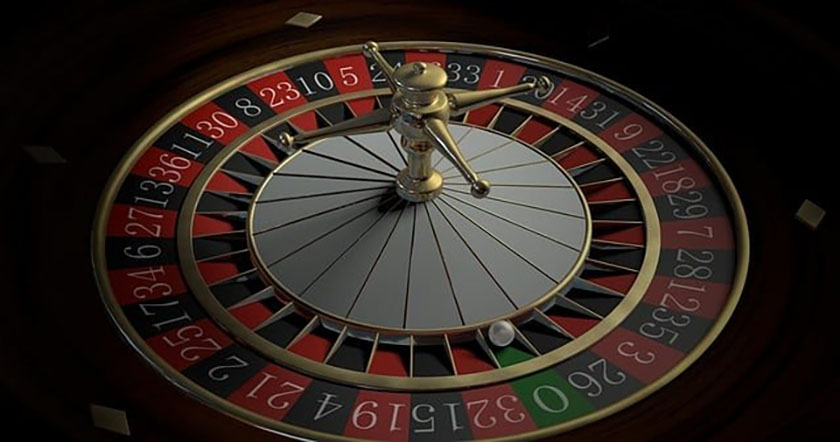Welcome to the world of roulette betting odds! Understanding the odds in roulette is crucial for any player wanting to increase their chances of winning. Whether you are a seasoned pro roulette player or a newbie, knowing the odds can help you make informed decisions and develop effective betting strategies. In this guide, we will explore the intricacies of roulette betting odds, from the different types of bets to calculate the probabilities of winning. We’ll also delve into popular betting strategies and provide tips for maximizing your odds at the roulette table. So, let’s dig into the fascinating world of roulette betting odds and discover how they can make a significant difference in your gameplay and potential winnings.
Table of Content
Basic Roulette Odds
When it comes to roulette, understanding the basic odds and avoid roulette mistakes is essential. This section will touch on the different types of bets you can place in roulette, including inside bets and outside bets. We’ll explain how each bet works and provide a detailed breakdown of the associated roulette betting odds. By the end of this portion, you will have a solid understanding of the basic roulette betting odds and be ready to make informed betting choices.
Types of bets in roulette (e.g., inside bets, outside bets)
Roulette bets have two main types: inside and outside. Inside bets are placed on certain numbers or groups of numbers within the roulette wheel, while outside bets are placed on broader categories such as colors, odd or even numbers, or ranges of numbers. We will explore the various inside and outside bets, explaining the odds and potential payouts of roulette betting. Understanding the different bet types allows you to tailor your betting strategy to your preferences and risk tolerance.
Detailed breakdown of the odds
Inside Bets:
- Straight Bet: Betting on a single number. The odds are 35 to 1.
- Split Bet: Betting on two adjacent numbers. The odds are 17 to 1.
- Street Bet: Betting on three numbers that are in a row. The odds are 11 to 1.
- Corner Bet: Betting on four numbers that meet at a corner. The odds are 8 to 1.
- Basket Bet: Betting on the numbers 0, 1, 2, and 3 (only available in American roulette). The odds are 6 to 1.
- Double Street Bet: Betting on two adjacent rows covering six numbers. The odds are 5 to 1.
Outside Bets:
- Red/Black Bet: Betting on the color of the winning number. The odds are 1 to 1.
- Odd/Even Bet: Betting on whether the winning number will be odd or even. The odds are 1 to 1.
- Low/High Bet: Betting on whether the winning number will be in the low range (1-18) or high range (19-36). The odds are 1 to 1.
- Dozen Bet: Betting on a set of 12 numbers (1-12, 13-24, or 25-36). The odds are 2 to 1.
- Column Bet: Betting on a column with 12 numbers. The odds are 2 to 1.
It’s important to note that the roulette betting odds mentioned above are based on European roulette. American roulette has a double zero (00) pocket, slightly altering the roulette betting odds for specific bets.
Calculating Roulette Odds
To make well-informed betting decisions, it’s crucial to understand how to calculate roulette betting odds. In this section, we will explain the formula for calculating roulette odds and provide step-by-step examples for different types of bets. Whether you want to know the odds of hitting a specific number or the probability of winning on an outside bet, this section will equip you with the knowledge to calculate and interpret roulette odds accurately.
Explanation of the formula for calculating roulette odds
The formula for calculating the odds in roulette depends on the bet you place. For inside bets (e.g., straight, split, street, corner), the roulette betting odds can be calculated by dividing the total number of winning outcomes by the total number of possible outcomes. The odds are typically expressed as a ratio for outside bets (e.g., red/black, odd/even, low/high).
Step-by-step examples of calculating odds for different bet types:
- Example of a Straight Bet:
- Total number of winning outcomes: 1 (as there is only one winning number selected)
- Total number of possible results: 37 (in European roulette, with numbers 0-36)
- Odds: 1 in 37 or 1/37
- Example of a Red/Black Bet:
- Total number of winning outcomes: 18 (as there are 18 black numbered compartments and 18 red numbers)
- Total number of possible outcomes: 37
- Odds: 18 in 37 or 18/37
- Example for a Dozen Bet:
- Total number of winning results: 12 (as there are three dozen, and each covers 12 numbers)
- Total number of possible outcomes: 37
- Odds: 12 in 37 or 12/37
- Example of a Street Bet:
- Total number of winning results: 3 (as a street bet covers three consecutive numbers)
- Total number of possible outcomes: 37
- Odds: 3 in 37 or 3/37
These examples provide a basic understanding of calculating the roulette betting odds for different bet types. It’s important to remember that the odds may vary depending on certain roulette variants being played (e.g., European, American, French).
Popular Roulette Betting Strategies
When it comes to playing roulette, many players utilize various betting strategies to improve their odds and potentially enhance their winnings. This section will explore two popular roulette betting strategies: The Martingale system and the Fibonacci sequence.
Common roulette betting strategies (e.g., Martingale, Fibonacci)
The Martingale system is one of roulette’s most well-known and widely used betting strategies. The principle behind this strategy is to double your bet after every loss to recover previous losses and make a profit. Here’s how it works:
- Start by placing a bet on an even-money bet (e.g., red/black, odd/even).
- If you win, take your winnings and start again with the initial bet.
- If you did not win, double your stake on the same even-money bet.
- Repeat the process of doubling your bet after each loss until you win.
The Martingale system is based on the presumption that you will eventually win and that your winnings will be enough to cover previous losses. However, it’s essential to consider the potential drawbacks of this strategy:
- Risk of significant losses: Doubling your bets after each loss can increase bet sizes rapidly. You may reach the table’s maximum bet limit or deplete your bankroll if you encounter a long losing streak.
- Requires a large bankroll: To withstand consecutive losses and keep doubling bets, you need a significant bankroll to avoid busting out.
- No guarantee of winning: The Martingale system does not alter the underlying odds of the game. It can provide short-term gains, but it doesn’t guarantee long-term profitability.
Fibonacci Sequence
The Fibonacci sequence is a mathematical sequence in which every number is the total of the two preceding numbers (ex., 1, 1, 2, 3, 5, 8, 13, and so on). The Fibonacci betting strategy in roulette involves placing bets based on this sequence. Here’s how it works:
- Start by betting the minimum amount.
- If you win, restart the sequence and bet the minimum amount again.
- If you lose, move one step forward in the Fibonacci sequence and bet that amount.
- Continue moving forward in the sequence after each loss until you win.
The Fibonacci strategy aims to capitalize on winning streaks while minimizing losses during losing streaks. However, similar to the Martingale system, it’s essential to consider the potential drawbacks:
- Slow progression: The Fibonacci strategy is generally considered less aggressive than the Martingale system as the bet sizes gradually increase. This can lead to slower overall progression and potentially smaller winnings.
- Not foolproof: While the Fibonacci strategy provides a systematic approach to betting, it does not guarantee profits or alter the inherent odds of the game.
It’s important to note that no betting strategy can guarantee consistent wins in roulette. The result of every spin is independent and based on chance. These strategies can provide structure and control over your bets but do not guarantee long-term profitability.
Setting realistic expectations, establishing betting limits, and managing your bankroll effectively is crucial when using any betting strategy. Responsible gambling is vital, and playing within your means for entertainment is essential.
Please note that the Martingale system and the Fibonacci sequence are just two examples of popular betting strategies in roulette. Numerous other techniques and variations are available, each with its own principles and considerations. It’s recommended to thoroughly understand and test any strategy before implementing it in your gameplay.
Tips for Maximizing Roulette Odds
When playing roulette, you can employ several tips and strategies to maximize your roulette betting odds of winning. This section will advise making informed betting decisions based on odds, guidance on managing your bankroll and setting betting limits, and tips for choosing the suitable roulette variant with favorable roulette betting odds.
Making Informed Betting Decisions
- Understand the odds: Familiarize yourself with the different types of bets and their associated odds. This knowledge will help you formulate informed decisions and choose bets with higher probabilities of winning.
- Stick to outside bets: Outside bets (e.g., red/black, odd/even, low/high) generally have better roulette betting odds of winning than inside bets. While the payouts may be lower, these bets offer a higher likelihood of success.
- Avoid the five-number bet: In American roulette, the five-number stake (covering 0, 00, 1, 2, and 3) has the highest house edge. Avoiding this bet is advisable as it reduces your chances of winning.
- Consider the table limits: Each roulette table has minimum and maximum bet limits. Ensure the table limits align with your bankroll and betting strategy to avoid being restricted or overexposed.
Managing Bankroll and Setting Betting Limits
- Set a budget: Before playing, determine how much you will spend on roulette. Set a budget you can comfortably afford to lose without negatively impacting your financial situation.
- Divide your bankroll: Split your budget into sessions or betting units. This way, you can avoid spending your entire bankroll in a single session and play multiple sessions.
- Set win and loss limits: Determine the number of winnings at which you’ll stop playing and the number of losses you’ll walk away. Setting these limits helps you control your bankroll and prevents chasing losses.
- Avoid chasing losses: It can be irresistible to increase your bets after a losing streak to recoup your losses quickly. However, this can lead to further losses. Stick to your predetermined betting limits and avoid impulsive decisions.
Choosing the Right Roulette Variant
- Play European or French roulette: Opt for European or French roulette over American roulette. European and French roulette have one single zero pocket each, reducing the house edge and improving your odds compared to the double zero in American roulette.
- Consider the La Partage rule: In French roulette, the La Partage rule applies when you place even-money bets (e.g., red/black, odd/even) and the ball lands on zero. This rule refunds half of your bet, lowering the advantage of the house and increasing your chances of grabbing bigger winnings.
- Research and compare odds: Different roulette variants may slightly vary their odds and rules. Take the time to research, study, and compare the odds of various roulette variants to choose a variant that offers the most favorable odds.
Roulette Odds and Variants
Roulette is a trending casino game with different variants, each with unique roulette betting odds and rules. This section will explore the most common roulette variants and compare the odds between American, European, and French roulette.
American Roulette
American roulette is a widely played variant, especially in North America. It features a wheel with 38 pockets, numbered 1 through 36, a single zero (0), and a double zero (00). The existence of the double zero increases the house edge compared to other variants.
Here are some key odds for American roulette:
- Straight Bet (betting on a single number): 1 in 38 or 2.63% chance of winning.
- Split Bet (betting on two adjacent numbers): 2 in 38 or 5.26% chance of winning.
- Red/Black, Odd/Even, High/Low Bets (outside bets): 18 in 38 or 47.37% chance of winning.
- Five-Number Bet (betting on 0, 00, 1, 2, and 3): 5 in 38 or 13.16% chance of winning.
The house edge in American roulette is 5.26%, making it less favorable for players than other variants.
European Roulette
European roulette is the most popular variant found in European and online casinos. It features a wheel with 37 pockets, numbered 1 through 36, and one zero (0). The absence of the double zero reduces the house edge, providing better odds for players.
Here are the key odds for European roulette:
- Straight Bet: 1 in 37 or 2.70% chance of winning.
- Split Bet: 2 in 37 or 5.41% chance of winning.
- Red/Black, Odd/Even, High/Low Bets: 18 in 37 or 48.65% chance of winning.
The house advantage in European roulette is 2.70%, making it more favorable for players than American roulette.
French Roulette
French roulette is similar to European roulette, featuring a roulette wheel with 37 pockets and a single zero (0). However, it also includes additional rules, such as the regulations of En Prison and La Partage, that further improve the odds for players.
Here are the key odds for French roulette:
- Straight Bet: 1 in 37 or 2.70% chance of winning.
- Split Bet: 2 in 37 or 5.41% chance of winning.
- Red/Black, Odd/Even, High/Low Bets: 18 in 37 or 48.65% chance of winning.
The La Partage rule applies when you place even-money bets (e.g., red/black, odd/even) and the ball lands on zero. In this case, you receive half of your bet back, reducing the house edge to 1.35%, making French roulette the most player-friendly variant in terms of odds.
Comparatively, European and French roulette offer better odds to players than American roulette due to the absence of the double zero pocket. Including additional rules in French roulette, such as La Partage and En Prison, further improves the odds.
Opt for European or French roulette whenever possible when choosing a roulette variant, as they provide better roulette betting odds and a lower house edge. However, it’s essential to check the specific rules and odds offered at the casino or online platform where you’re playing, as slight variations can exist.


